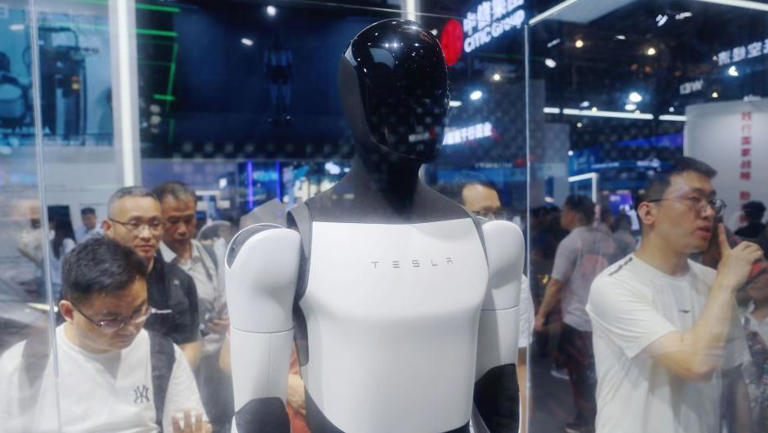Elon Musk has unveiled Tesla’s ambitious plans to integrate humanoid robots into its operations, with production expected to start next year. In a recent announcement made on his social media platform X (formerly Twitter), Musk revealed that Tesla will begin producing its humanoid robots, known as Optimus, for internal use within the company. He added that these robots are projected to enter high-volume production and become available for purchase by other companies by 2026. This strategic shift highlights Tesla’s broader focus on incorporating advanced technologies into its business model, a move that aligns with its ongoing efforts to drive innovation amidst fluctuating demand for electric vehicles.
The revelation came just a day before Tesla was scheduled to release its latest financial results, which contributed to a notable 5% increase in the company’s stock price on Wall Street. Musk’s announcement reflects Tesla’s ambition to diversify its technological portfolio beyond electric vehicles, focusing on artificial intelligence (AI), robotics, and autonomous driving technologies. Despite previously setting an aggressive timeline for the robot’s deployment, Musk’s updated plan indicates that while limited production of the humanoid robots will commence next year, widespread availability and sales are targeted for 2026. The goal is for each robot to cost less than $20,000, making the technology more accessible for various applications and industries.
This announcement is part of a broader trend where Tesla is intensifying its focus on cutting-edge technologies to remain competitive and innovative. The company has faced a slowdown in electric vehicle demand, prompting it to explore new avenues for growth and efficiency. The integration of AI and robotics into Tesla’s operations is seen as a strategic move to enhance productivity and operational capabilities, potentially transforming the manufacturing and service sectors.
Musk’s approach to setting ambitious goals is well-documented, though his timelines have not always materialized as planned. For instance, in 2019, he projected that Tesla would have self-driving taxis operational by the following year. This forecast was not met, and the much-anticipated robotaxi was initially slated for unveiling on August 8 of this year. However, this event has been delayed, with Musk suggesting that the additional time will allow Tesla to showcase new features and improvements. Bloomberg News has reported that the robotaxi launch is now expected to occur in October.
The delay in the robotaxi launch and Musk’s subsequent adjustments highlight the challenges and complexities inherent in pioneering new technologies. Despite these setbacks, Tesla’s commitment to advancing AI and robotics remains strong. By focusing on these technologies, Tesla aims to not only enhance its manufacturing processes but also to explore new revenue streams and maintain its position at the forefront of technological innovation.
Overall, Tesla’s strategic emphasis on humanoid robots and other advanced technologies underscores its determination to navigate the evolving landscape of the automotive and tech industries. As the company prepares to enter a new phase of production and commercialization, it remains to be seen how these innovations will impact its operations and market position in the coming years.
